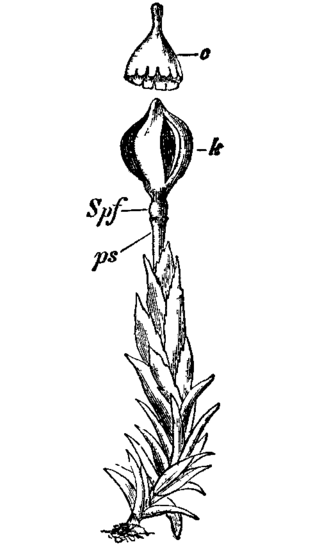
Andreaeaceae is a family of mosses which includes two genera, Andreaea, containing about 100 species, and the genus Acroschisma. The Andreaeaceae prefer rocky habitats ranging from tropical to arctic climates, on which they form tufted colonies, typically with reddish to blackish shoots. The capsules lack the peristome mechanism and dehisce longitudinally to release the spores, resulting in a paper-lantern appearance.
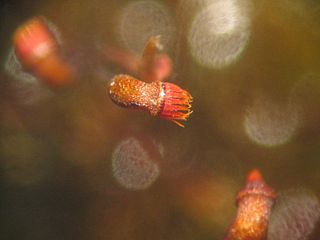
The Bryopsida constitute the largest class of mosses, containing 95% of all moss species. It consists of approximately 11,500 species, common throughout the whole world.
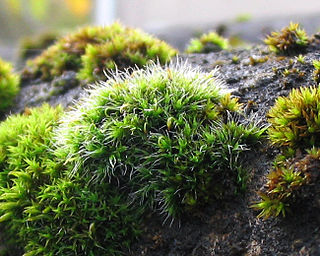
Grimmiales is an order of mosses in the subclass Dicranidae. It comprises four families: Grimmiaceae, Ptychomitriaceae, Seligeriaceae, and Saelaniaceae.

Sphagnopsida is a class of mosses that includes a single subclass Sphagnidae, with two orders. It is estimated it originated about 465 million years ago, along with Takakia. The order Sphagnales contains four living genera: Ambuchanania, Eosphagnum, and Flatbergium, which counts four species in total, and Sphagnum which contains the rest of the species. The extinct Protosphagnales contains a single fossil species.
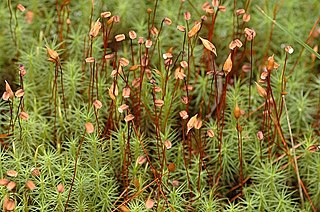
Polytrichaceae is a common family of mosses. Members of this family tend to be larger than other mosses with a thickened central stem and a rhizome. The leaves have a midrib that bears photosynthetic lamellae on the upper surface. Species in this group are dioicous. Another characteristic that identifies them is that they have from 32 to 64 peristome teeth in their sporangium.
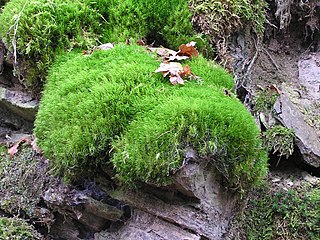
The Dicranidae are a widespread and diverse subclass of mosses in class Bryopsida, with many species of dry or disturbed areas. They are distinguished by their spores; the peristome teeth are haplolepideous with a 4:2:3 formula, and an exostome is absent.

Pottiales is an order of mosses in the subclass Dicranidae.
Andreaeobryum, the Mossy Cowl Moss, is a genus of moss with a single species Andreaeobryum macrosporum, endemic to Alaska and western Canada. The genus is placed as a separate family, order and class among the mosses.

Bryales is an order of mosses.
Gigaspermaceae are a family of mosses in the monotypic order Gigaspermales. The order is placed in subclass Gigaspermidae of the class Bryopsida. They were previously placed in subclass Funariidae.

Encalyptales is an order of mosses in subclass Funariidae. It contains a single family.

Dicranales is an order of haplolepideous mosses in the subclass Dicranidae.

Fissidentaceae is a family of haplolepideous mosses (Dicranidae) in the order Dicranales, with a single genus, Fissidens. It was formerly placed in the now-obsolete order Fissidentales.
Eustichia is the only genus of moss in family Eustichiaceae.

Bryaceae is a family of mosses.
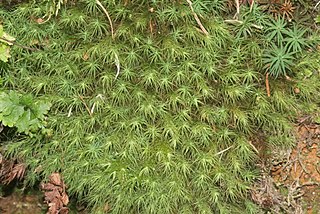
Bartramiales is an order of moss.

Mniaceae is a moss family in the order Bryales.
Rhachitheciaceae is a family of haplolepideous mosses (Dicranidae)s in the order Dicranales. It consists of seven genera.

Ditrichaceae is a family of haplolepideous mosses (Dicranidae) in the order Dicranales.
William Russel Buck is an American bryologist.













